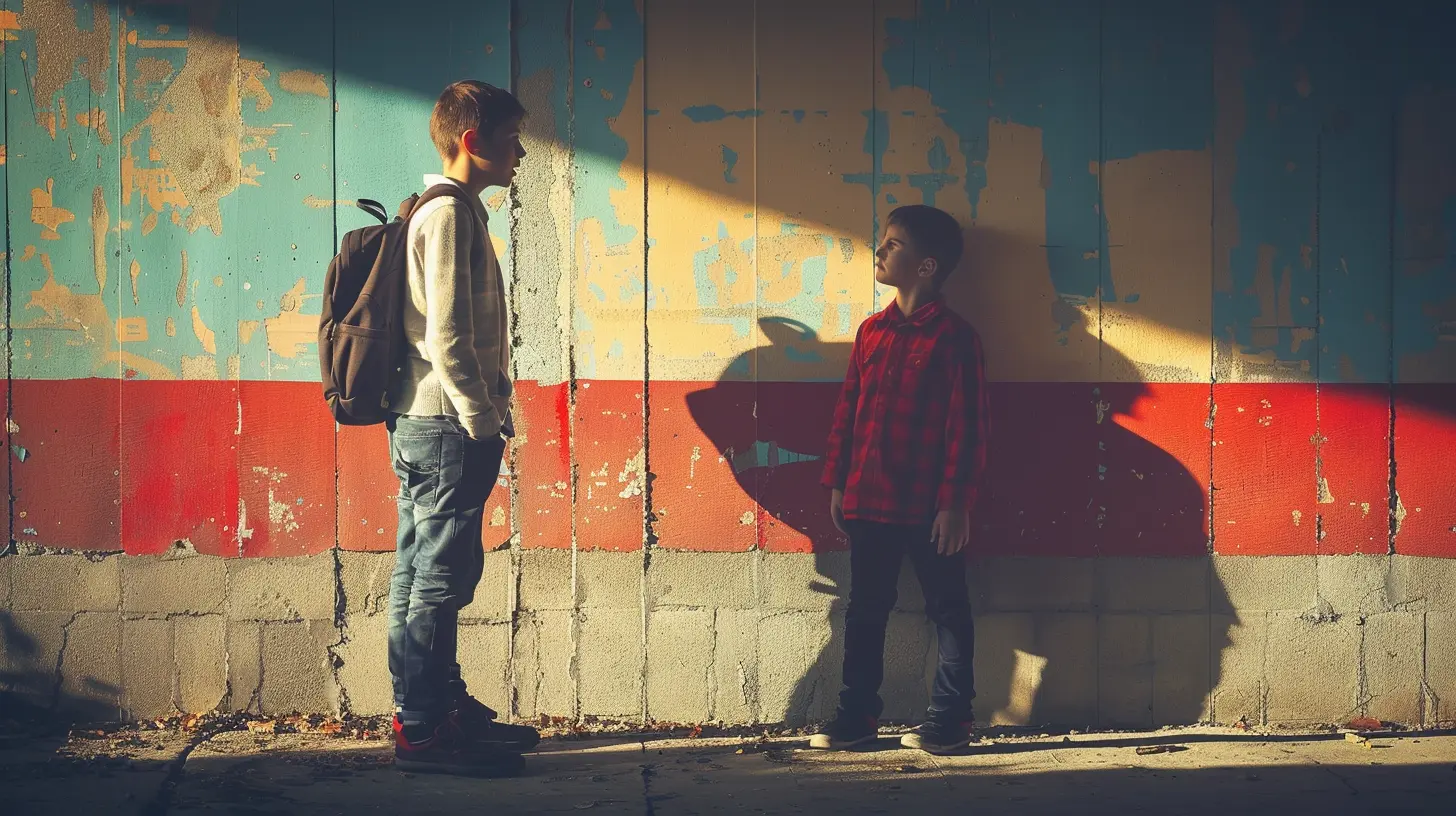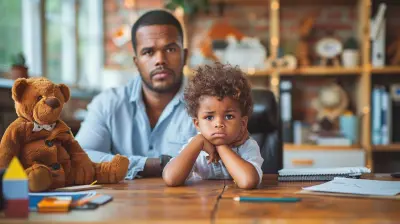Handling Bullying: How to Support Your Child When They’re the Target or the Bully
23 September 2025
Bullying. Just hearing the word can spark a storm of emotions in a parent’s heart—especially when your own child is involved. Whether your child is enduring the pain of being targeted or is acting out as the bully, it’s tough. It’s confusing. And it's a situation that calls for compassion, awareness, and swift action.
As parents, we want to protect our kids from the world’s harsh edges. But sometimes, those edges come from the classroom, the playground, or even online spaces. The good news? You’re not powerless. Let’s unpack how to handle bullying from both sides of the fence.
What Exactly Is Bullying?
Before diving in, let’s get clear about what bullying actually is. It’s not just typical kid conflict or teasing between buddies. Bullying is:- Intentional harm
- Repetitive behavior
- A power imbalance—physical, social, or emotional
It can show up in a bunch of forms: physical aggression, verbal abuse, social exclusion, rumors, or digital harassment (hello, cyberbullying 🙄).
And here's the kicker: whether your child is being bullied or is doing the bullying, they’re both crying out for help in their own ways.
Signs Your Child Might Be Getting Bullied
Kids don’t always come out and say, “Mom, I’m being bullied.” Sometimes, they may not have the words, or maybe they feel ashamed or scared. So, how do you know something’s wrong?Here are some red flags:
- Suddenly doesn’t want to go to school
- Withdraws from friends or family
- Has unexplained bruises or damaged belongings
- Frequently complains of headaches or stomachaches
- Changes in eating or sleeping patterns
- Drops in academic performance
- Becomes unusually anxious, moody, or sad
Your gut is your superpower here. If your child just doesn’t seem like themselves lately, lean in and ask what’s going on.
How to Help If Your Child Is Being Bullied
This is heartbreaking. Seeing your child hurt is like a punch to your soul. But breathe—you’ve got this. Here’s how you can step in and help:1. Stay Calm and Listen
Your first instinct might be to let your mama (or papa) bear roar, but resist the urge to overreact. Your child needs to feel safe opening up to you. Sit down, get on their level, and really listen.Ask open-ended questions like:
- "Can you tell me what happened?"
- "How did that make you feel?"
- "Has this happened more than once?"
2. Validate Their Feelings
Say things like, "What you're going through is not okay" or "You're not alone, and this isn’t your fault." Avoid minimizing or brushing it off—this builds trust and lets them know you’re on their side.3. Gather the Facts
Who? What? When? Where? Get a clear picture without pressing your child too hard. You’re collecting puzzle pieces to put the full picture together.4. Partner With the School
Reach out to teachers, school counselors, or the principal. Most schools take bullying seriously and have protocols in place to intervene. Keep the tone cooperative—not accusatory.5. Teach Coping Strategies
Empower your child with skills like:- Walking away confidently
- Using assertive (not aggressive) words
- Finding safe spaces or trusted adults
- Surrounding themselves with kind friends
Role-play scenarios at home so they feel more prepared and confident.
6. Offer Emotional Support
Counseling can be incredibly healing, especially if your child starts showing signs of anxiety, depression, or low self-esteem. Therapy isn’t a sign of weakness—it’s a super tool.
What If Your Child Is The Bully?
Whoa. This one hits differently, right? No parent wants to hear that their child is bullying others. But if you get that call or message, take a deep breath.Your child being the bully doesn’t mean you're a bad parent. It means there’s something deeper going on that needs attention.
Why Kids Bully
Bullying often stems from:- A need for control or power
- Low self-esteem or insecurity
- Peer pressure
- Modeling behavior they’ve seen (yes, even at home or in media)
- Unprocessed emotions or trauma
Let’s approach this with curiosity, not condemnation.
What To Do If Your Child Is Bullying Others
1. Have a Heart-to-Heart
Talk to your child without jumping to punishments right away. Ask:- "Can you help me understand what happened?"
- "How do you think the other person felt?"
- "Why do you think this happened?"
Encourage honesty by staying calm and non-judgmental.
2. Make It Clear: Bullying Isn’t Acceptable
Set firm, clear boundaries. Let them know that their actions have consequences and don’t align with your family values. But also offer a path forward—this is about growth, not shame.3. Teach Empathy
Empathy isn’t automatic—it’s learned. Talk about feelings. Watch movies from another person’s perspective. Ask:> "How would you feel if that happened to you?"
Plant the seeds of compassion early and often.
4. Monitor Their Behavior
Be more present both online and offline. Keep an eye on their social media, friend groups, and digital chats. You want to catch patterns before they become problems.5. Provide Positive Outlets
Sometimes, bullying is just misdirected energy. Encourage sports, art, music—anything that channels emotions in healthy ways and boosts confidence.6. Seek Professional Help
If the behavior is persistent or rooted in deeper issues, a counselor or therapist can help uncover underlying causes and teach healthier coping skills.Building a Bully-Proof Mindset (For All Kids)
Whether your child has been bullied, is the bully, or just trying to navigate school life, there are universal skills that can help them stand strong.1. Teach Assertiveness, Not Aggression
Assertiveness is the sweet spot between being a doormat and being a steamroller. Show them how to speak up confidently and respectfully.2. Foster Self-Esteem
Kids who feel good about themselves are less likely to be bullies and more likely to dust themselves off when bullied. Praise effort, not just results. Celebrate small wins.3. Highlight Kindness and Inclusivity
Model kindness at home. Let your child see you standing up for others, celebrating differences, and using respectful language—even when you’re frustrated.4. Stay Engaged
Know who they’re hanging out with. Chat about their school day, their online life, their worries. Open communication is like a safety net—it gives them security and support to fall back on.When to Intervene Immediately
Sometimes the situation becomes urgent. If your child:- Talks about self-harm or suicide
- Has physical injuries or severe emotional distress
- Is involved in bullying that includes threats, violence, or hate speech
Don’t wait. Contact school authorities, mental health professionals, or even law enforcement if necessary. Your child’s safety is priority #1.
The Role of Technology and Cyberbullying
Bullying doesn’t stop at the school gate anymore. With smartphones and social media, it can follow kids home—and that’s terrifying.Signs of cyberbullying:
- Your child suddenly avoids their phone or social media
- Becomes anxious after being online
- Hides their screen from you
- Seems upset after reading texts or notifications
What you can do:
- Keep devices in shared areas
- Talk openly about digital behavior
- Report abusive posts and block bullies
- Consider parental controls if needed
Online or offline, bullying stings just the same. Your support matters just as much in both arenas.
Final Thoughts: You’re Not Alone
Whether your child is on the receiving end, the one acting out, or even a bystander who doesn’t know what to do—this is tough stuff. But the fact that you’re here reading this, willing to step up and help your child navigate it? That’s powerful.You’re doing the work. You’re listening. You’re showing up.
And that makes all the difference.
Remember, kids are still growing, learning, figuring themselves out. Mistakes will happen. Emotions will run wild. But with your love, patience, and guidance, they’ll find their way. And with your help, they can learn to stand strong, be kind, and speak up when it counts.
all images in this post were generated using AI tools
Category:
Parenting ChallengesAuthor:

Max Shaffer
Discussion
rate this article
1 comments
Brianna Duffy
Empower your child with open communication, empathy, and problem-solving skills to navigate bullying situations effectively.
September 24, 2025 at 3:16 AM

Max Shaffer
Thank you for highlighting the importance of these skills! Open communication and empathy are crucial in helping children handle bullying effectively.


